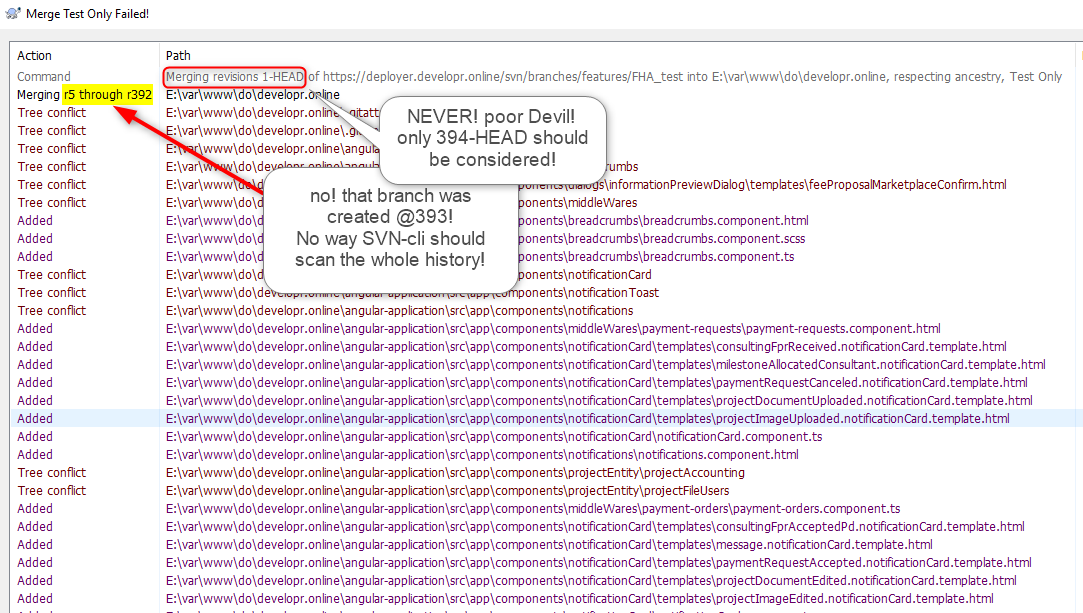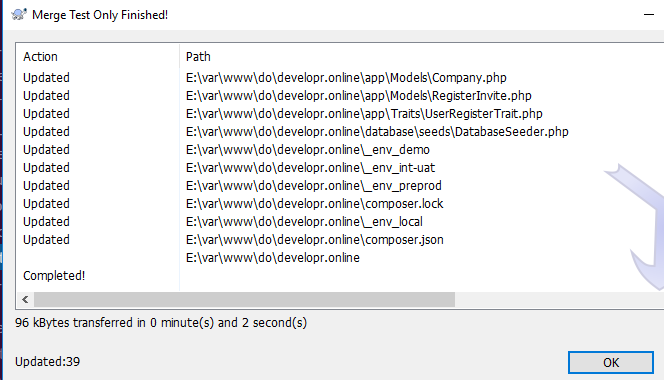Until today, for since at least 3 months ago, I regularly encountered hundreds of tree conflicts when attempting to merge a branch back into the trunk (using TortoiseSVN 1.11). Whether rebased or not, BTW.
I've been using TortoiseSVN since its v1, back in 2004, and I used to reintegrate branches all the time. Something must have happened recently I suppose?
So today I ran this simple experiment, and I found what was creating these crazy conflicts:
- I forked off the trunk @393;
- I modified tens of files randomly, as well as creating new ones;
- I committed. Now @395 (a colleague forked off at 394 to perform his own stuff).
- Then I tried to reintegrate the branch back into the trunk, test only;
following TortoiseSVN's recommendation in the wizard: "to merge all revisions (reintegrate), leave that box empty". To achieve this, I right-clicked onto the trunk folder, and chose "TortoiseSVN > Merge, from /path/to/branch", and I left the rev range empty, as advised on the dialog.
Discussion: (see attachment)
all revisions... of what? Little did I know that the client must have been referring to "all revisions of the target! (trunk)", as, in the process of reintegrating that branch, I saw the mention "Merging revisions 1-HEAD"! OMG. Poor Devil, you're falling to your death here. That branch was born @393, can't you read its birth certificate, for God's sake? ![this is why so many conflicts occurred: SVN-cli is going on a foolish spree from revision 1]()
Resolution:
- Contrarily to what's advised by the wiz, do specify a range, that covers ALL revisions of...the branch's life! therefore, 394-HEAD;
- now run that merge test again, and get a cigar. (
![see second attachment]() ).
).
Moral:
I can't comprehend why they still haven't fixed that bug, because it is one, I'm sorry.
I should take the time to report this with them.


